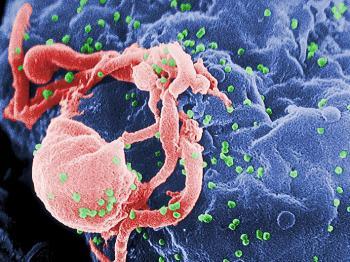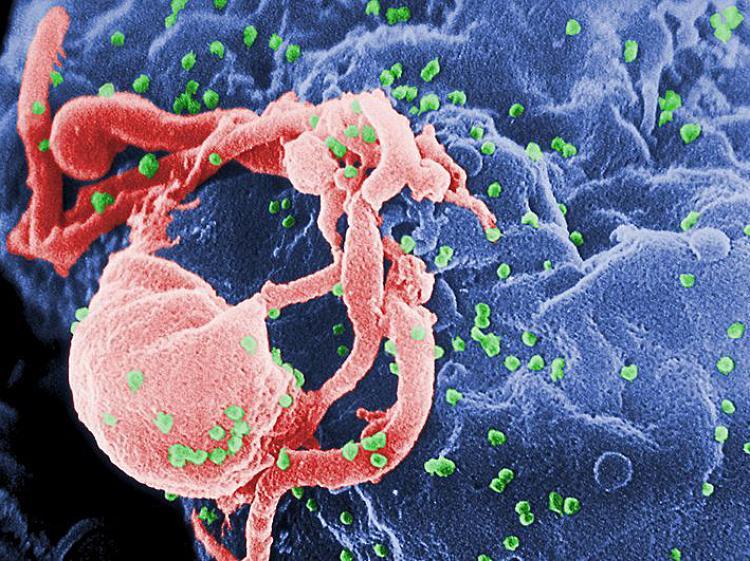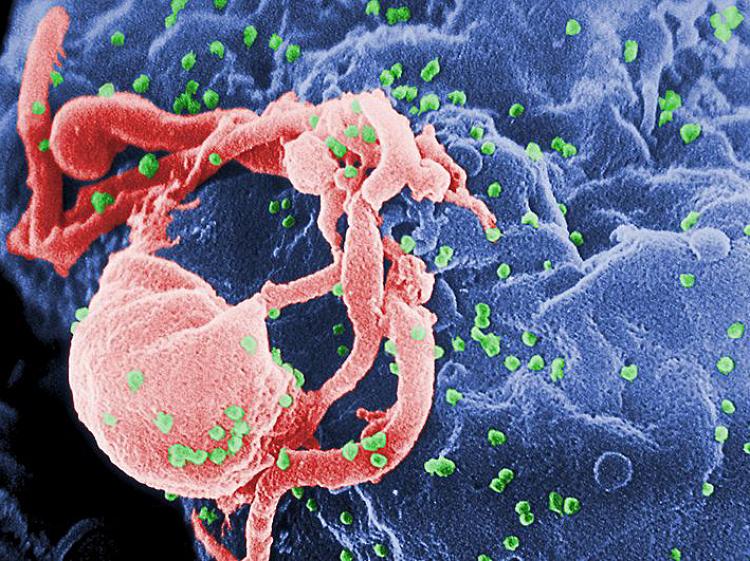In a case study published on Feb. 25 in the scientific journal Nature, a worldwide team of scientists has determined that the HIV virus is rapidly evolving in order to avoid triggering the immune system. The team of scientists was lead by Dr. Philip Goulder, a researcher from Oxford University. For the study, scientists analyzed the viral strains and their genetic codes of 2,800 HIV-positive people in Australia, the Caribbean, Europe, Japan, North America, and sub-Saharan Africa.
The HIV (Human Immunodeficiency Virus), the virus that causes AIDS, is perhaps the most devastating pandemic facing mankind today. Already an estimated 25 million people have died as a result of HIV/AIDS, while another estimated 33.2 million people are infected. There is no cure for the virus, although there are several available treatments.
According to Dr. Goulder, “Even in the short time that HIV has been in the human population, it is doing an effective job of evading our best efforts at natural immune control of the virus.”
Although no one is immune to the virus, the disease progresses at different rates in different people. For example, without antiretroviral drugs, some may develop AIDS in as little as a year after infection, while others can go without treatment for as long as two decades.
Viruses are unable to reproduce on their own. They way viruses replicate themselves is by infecting, or more accurately, hijacking a cell in the host and turning it into a virus factory. For any virus to do this, it must escape immunity genes, one of which is called HLA, and it seems that this is exactly what HIV has been able to do.
For example, if a population has a high occurrence of a certain HLA gene, the HIV virus will have evolved specifically to avoid it. In the study, it was shown that Japan has a high prevalence of the HLA-B*51 variant of the gene. Two-thirds of the cases of people with HIV in Japan have a strain of the virus that has developed what’s called an “escape mutation” exactly to the HLA-B*51. However, in Britain and Africa, the strain of HIV with the “escape mutation” for that variation of the HLA gene is only about 15 to 25 percent.
Rodney Phillips, co-author of the study, said in a press release, “Where a favorable HLA gene is present at high levels in a given population, we see high levels of the mutation that enable HIV to resist this particular gene effect. … The virus is outrunning human variation, you might say.”
This then creates problems for the pursuit of a vaccine. Not only will a potential vaccine have to account for these “escape mutations,” but also it will need to account for geographical differences in the virus.
Although this may seem grim, doctors remain optimistic. “What was previously clear is the virus could evolve within each infected person but that doesn’t really matter from a vaccine perspective if the virus at the population level is staying the same,” said Dr. Goulder.
“The implication is that once we have found an effective vaccine, it would need to be changed on a frequent basis to catch up with the evolving virus, much like we do today with the flu vaccine.”
HIV can be transmitted from person to person in several ways. The most common form of transmission comes from unprotected sexual relations with someone with the virus. When infected sexual secretions come in contact with the genital, oral, or rectal mucous membrane of another, the disease will be passed on. In addition, a mother may be able to pass on the virus to her child while it is in utero or during childbirth. A third possibility is if infected blood comes in contact with an open wound, either as a result of intravenous drug use or contaminated blood transfusions.
This final factor is the major contributor the spread of HIV/AIDS in China. Henan province in central China became the focus of global attention in 2001 for corrupt blood-collection programs organized by the Chinese Communist Party that has lead to an explosion of HIV/AIDS in the country. Unregulated and unsanitary “clinics” spread the virus to poor rural areas when locals were encouraged to sell their plasma to these blood banks. Repeated reuse of individual needles spread the virus from donor to donor.
However, once it became clear that the virus was rapidly spreading through these rural communities, Henan officials tried to cover up the epidemic by jailing AIDS activists and expelling journalists who tried to report on the subject. Locals were not told what the virus was, which led to an infection rate as high as 60–84 percent in these villages and towns. Entire villages had their populations decimated without ever even knowing what was happening.
Making matters worse, the provincial capital of Zhengzhou is the main railway hub for China, which aided the spread of HIV/AIDS throughout China. According to U.N. officials, the estimated figure for infections could reach as high as 20 million by 2010.
The HIV/AIDS pandemic is perhaps one of the biggest challenges of the 21st century. But because of the research done by Dr. Philip Goulder and his team, we are at least able to understand the virus a bit better.



